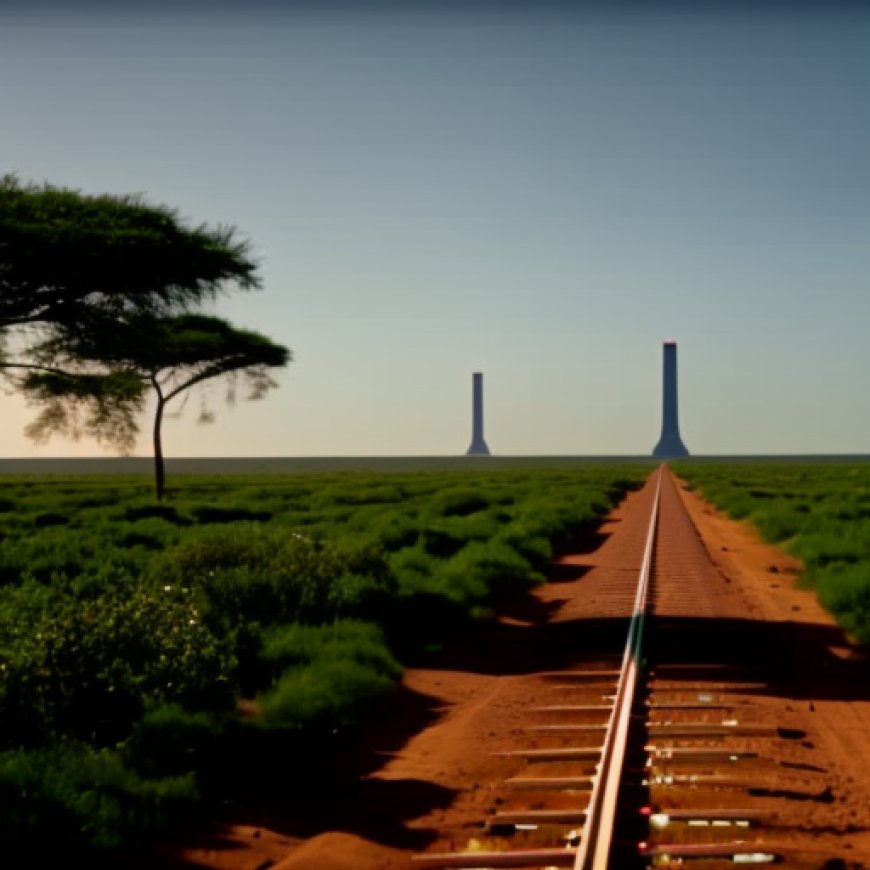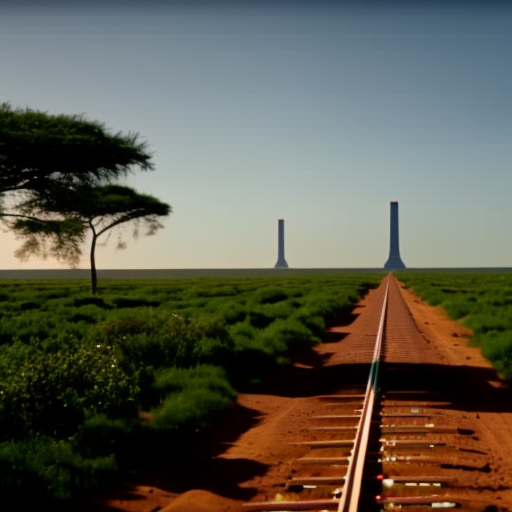Investing $100 billion annually: Africa’s ambitious path to clean energy by 2040
Investing $100 billion annually: Africa's ambitious path to clean energy by 2040 Business Insider Africa


Kenya’s Transition to Renewable Energy: A Sustainable Development Goal
Introduction
Kenya has been making significant progress in expanding its clean and green energy capacity, particularly in the development of renewable energy sources such as geothermal and wind power. This article highlights Kenya’s commitment to achieving the Sustainable Development Goals (SDGs) and its ambitious plan to use 100% renewable energy by 2030.
Investment for Successful Transition
According to experts, Africa will require an estimated $100 billion annually until 2040 to successfully transition to renewable energy. This investment is crucial for achieving the SDGs and addressing climate change. Kenya is at the forefront of this transition, with about 87% of its power already generated from renewable energy sources.
Combining Energy Networks for a Clean Energy Superpower
By combining its energy networks and prioritizing renewable energy sources, Africa has the potential to become a clean energy superpower. This approach avoids relying on outdated fossil fuel infrastructure that contributes to the climate crisis. The continent’s commitment to the SDGs is evident in its efforts to promote sustainable development through clean energy.
Kenya’s Green Development Plan
Kenya has launched a comprehensive green development plan that aims to achieve 100% renewable energy usage by 2030. This plan encompasses various sectors, including green transportation, eco-friendly urbanization, sustainable agriculture, and green industry. Currently, Kenya’s grid is already 92% powered by renewable energy.
Funding for Renewable Energy Projects
Last month, Kenya was included in a list of nations eligible to receive funding for renewable energy projects. The United States Agency for International Development (USAID) allocated Sh12.5 billion ($88.9 million) to support these initiatives. This funding will enable the installation of 10 million on-grid and off-grid connections, benefiting an estimated 50 million people in sub-Saharan Africa.
The Clean Energy Conference in Africa
The decision to hold the Clean Energy Conference in Africa highlights the continent’s significant advancements in clean energy. The conference aims to catalyze African-led conversations on environmental stewardship, innovation, and revenue generation across various sectors. Mining, in particular, plays a crucial role in anchoring the energy sector and will continue to be critical during the transition to clean energy.
Just Transition: A Climate, Energy, and Development Vision for Africa
A recent study titled “Just Transition: A Climate, Energy, and Development Vision for Africa” emphasizes Africa’s potential to move away from fossil fuel dependence. The study warns against the Global North’s fixation on unclean energy, which has left Africans vulnerable to the impacts of climate change. It calls for immediate action to address energy poverty, regional conflict, economic instability, and patriarchal oppression, leveraging Africa’s unique economies, resources, ecosystems, and cultures.
Promoting Agroecological Systems and Pan-African Industrial Policy
The study also advocates for a transition from community-based agroecological systems to export-oriented, cash-crop agriculture. Additionally, it emphasizes the need for a Pan-African industrial policy that focuses on internal market growth, African resource development, and job creation for Africans. These measures align with the SDGs and contribute to sustainable development in Africa.
Addressing Energy Access Challenges
In 2022, approximately 970 million people lacked access to clean energy for cooking, and at least 600 million people did not have access to electricity. Achieving universal access to clean and affordable energy is a crucial SDG, and Kenya’s transition to renewable energy plays a significant role in addressing these challenges.
SDGs, Targets, and Indicators
1. Which SDGs are addressed or connected to the issues highlighted in the article?
- SDG 7: Affordable and Clean Energy
- SDG 9: Industry, Innovation, and Infrastructure
- SDG 13: Climate Action
- SDG 15: Life on Land
2. What specific targets under those SDGs can be identified based on the article’s content?
- SDG 7.2: Increase substantially the share of renewable energy in the global energy mix.
- SDG 7.3: Double the global rate of improvement in energy efficiency.
- SDG 9.1: Develop quality, reliable, sustainable, and resilient infrastructure.
- SDG 13.2: Integrate climate change measures into national policies, strategies, and planning.
- SDG 15.2: Promote the implementation of sustainable management of all types of forests.
3. Are there any indicators mentioned or implied in the article that can be used to measure progress towards the identified targets?
- Indicator for SDG 7.2: Percentage of renewable energy in the total energy consumption.
- Indicator for SDG 7.3: Energy intensity measured in terms of GDP.
- Indicator for SDG 9.1: Proportion of the rural population who live within two kilometers of an all-season road.
- Indicator for SDG 13.2: Number of countries that have integrated climate change measures into their national policies, strategies, and planning.
- Indicator for SDG 15.2: Forest area as a proportion of total land area.
4. Table: SDGs, Targets, and Indicators
| SDGs | Targets | Indicators |
|---|---|---|
| SDG 7: Affordable and Clean Energy | Increase substantially the share of renewable energy in the global energy mix. | Percentage of renewable energy in the total energy consumption. |
| SDG 7: Affordable and Clean Energy | Double the global rate of improvement in energy efficiency. | Energy intensity measured in terms of GDP. |
| SDG 9: Industry, Innovation, and Infrastructure | Develop quality, reliable, sustainable, and resilient infrastructure. | Proportion of the rural population who live within two kilometers of an all-season road. |
| SDG 13: Climate Action | Integrate climate change measures into national policies, strategies, and planning. | Number of countries that have integrated climate change measures into their national policies, strategies, and planning. |
| SDG 15: Life on Land | Promote the implementation of sustainable management of all types of forests. | Forest area as a proportion of total land area. |
Behold! This splendid article springs forth from the wellspring of knowledge, shaped by a wondrous proprietary AI technology that delved into a vast ocean of data, illuminating the path towards the Sustainable Development Goals. Remember that all rights are reserved by SDG Investors LLC, empowering us to champion progress together.
Source: africa.businessinsider.com

Join us, as fellow seekers of change, on a transformative journey at https://sdgtalks.ai/welcome, where you can become a member and actively contribute to shaping a brighter future.







